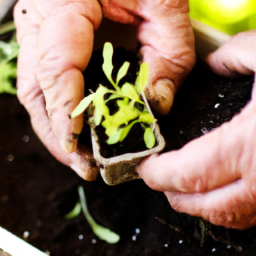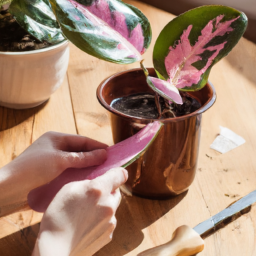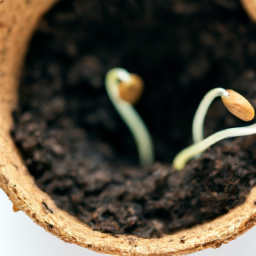
Have you ever marveled at the beauty of a blooming flower or enjoyed the taste of a freshly picked vegetable? Behind every vibrant plant, there is a fascinating journey that begins with a tiny seed. Growing from seed: unlocking the potential is an incredibly rewarding experience that allows us to witness the miracle of life firsthand. Whether you are a seasoned gardener or a beginner, this blog post will guide you through the process of nurturing seeds into thriving plants, unlocking their full potential along the way. So, grab your gardening gloves and let’s dive into the wonderful world of seed starting!
The Benefits of Growing Plants from Seed
Are you considering starting a garden? Growing plants from seed is an excellent way to unlock the potential of your green thumb. Not only is it a rewarding and fulfilling experience, but it also offers several benefits that you may not get from buying pre-grown plants. In this article, we will explore the advantages of growing plants from seed and provide you with a step-by-step guide to help you get started.
1. Cost-Effective
One of the primary benefits of growing plants from seed is the cost-effectiveness it offers. Seeds are generally much cheaper than purchasing fully grown plants from a nursery. By starting from seed, you can save a significant amount of money, especially if you plan on growing a large number of plants. This cost-saving advantage allows you to experiment with a wide variety of plants without breaking the bank.
Furthermore, when you grow plants from seed, you have control over the entire process, including the choice of organic or heirloom seeds. This allows you to grow your plants using sustainable and environmentally friendly methods, which may not be guaranteed when purchasing pre-grown plants.
Additionally, growing plants from seed also gives you the opportunity to share your surplus plants with friends and family, spreading the joy of gardening while saving them money as well.
2. Variety and Selection
Another significant advantage of growing plants from seed is the vast array of plant varieties available to you. Nurseries often have a limited selection of plants, but when you grow from seed, you have access to an extensive catalog of different plants, including rare and exotic species. This opens up a world of possibilities and allows you to create a diverse and unique garden tailored to your preferences.
Furthermore, growing from seed enables you to experiment with different varieties and hybrids, discovering new and exciting plants that may not be readily available in your local area. This variety and selection aspect of growing from seed can truly unlock your gardening potential and enhance your overall gardening experience.
Moreover, by growing plants from seed, you have control over the entire lifecycle of the plant, from germination to harvest. This level of involvement allows you to develop a deeper understanding of each plant’s growth process and develop a stronger connection with your garden.
3. Educational and Rewarding
Growing plants from seed is not only beneficial for your garden but also for your personal growth and development. It provides an excellent opportunity for education, especially for children and novice gardeners. By involving yourself in the entire process, you can learn about plant biology, germination, and the importance of providing the right conditions for healthy growth.
Watching a tiny seed transform into a vibrant plant is an incredibly rewarding experience. It instills a sense of accomplishment and satisfaction that cannot be replicated by purchasing fully grown plants. Additionally, growing plants from seed allows you to witness the entire life cycle of a plant, from seedling to maturity, providing a deeper appreciation for the wonders of nature.
Furthermore, the knowledge and skills gained from growing plants from seed can be applied to other areas of gardening and even inspire you to explore other horticultural endeavors such as plant breeding or seed saving. The possibilities are endless!
In conclusion, growing plants from seed offers numerous benefits, including cost-effectiveness, a wide variety of plant selection, and educational rewards. By starting from seed, you can unlock the potential of your garden and experience the joy of watching your plants grow and thrive. So why wait? Grab some seeds, roll up your sleeves, and embark on an exciting journey of unlocking the potential of growing from seed!
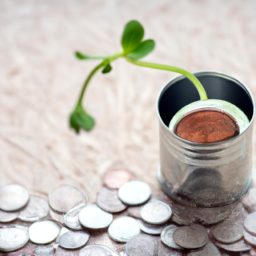
Tips for Successful Seed Germination and Growth
Introduction
Welcome to the world of seed germination and growth! Unlocking the potential of seeds is an exciting journey that allows you to witness the miracle of life unfolding right before your eyes. Whether you are a seasoned gardener or a beginner, these tips will help you achieve successful seed germination and ensure healthy growth for your plants.
Choosing the Right Seeds
When it comes to seed germination and growth, the first step is to choose the right seeds. Consider the climate and growing conditions in your area. Some seeds require specific temperature ranges or soil types to germinate successfully. Research the optimal conditions for the seeds you want to grow and select varieties that are suitable for your region.
Furthermore, it is important to choose high-quality seeds from reputable sources. Look for seeds that are fresh, viable, and free from diseases or pests. Investing in good quality seeds will significantly increase your chances of successful germination and healthy plant growth.
Lastly, consider the space you have available for gardening. If you have limited space, opt for compact varieties or plants that can be grown in containers. This will ensure that your plants have enough room to grow and thrive.
Preparing the Soil
The next step in successful seed germination is preparing the soil. Start by clearing the area of any weeds or debris. Loosen the soil using a garden fork or tiller, ensuring that it is well-drained and crumbly. Remove any large rocks or clumps that may hinder root growth.
Adding organic matter such as compost or well-rotted manure to the soil will improve its fertility and structure. This will provide the necessary nutrients for the seeds to germinate and the young plants to grow strong. Mix the organic matter thoroughly into the soil, distributing it evenly.
Before sowing the seeds, ensure that the soil is moist but not waterlogged. Excess water can lead to poor germination and root rot. If the soil feels too dry, water it lightly a day or two before sowing the seeds to ensure optimal moisture levels.
Seed Sowing Techniques
Now that you have chosen the right seeds and prepared the soil, it’s time to sow the seeds. Each type of seed may have specific requirements, so it is important to read the instructions on the seed packet. However, here are some general tips to help you with the process.
Start by creating furrows or small holes in the soil, ensuring they are deep enough to accommodate the seeds. The depth will vary depending on the size of the seeds, so refer to the packet for guidance. Space the furrows or holes according to the recommended spacing for the specific plant variety.
Gently place the seeds in the furrows or holes, ensuring they are evenly spaced. Cover the seeds with soil, lightly firming it down to ensure good seed-to-soil contact. Water the area gently using a fine mist or a watering can with a rose attachment.
It is important to label your seedlings to keep track of the different varieties. This will help you identify the plants as they grow and allow you to provide the necessary care and attention to each type.
Caring for Seedlings
Once the seeds have germinated and the seedlings have emerged, proper care is crucial for their healthy growth. Here are some essential tips:
1. Watering: Seedlings need consistent moisture to thrive. Water them gently, ensuring that the soil remains moist but not waterlogged. Avoid overwatering, as it can lead to damping-off disease or root rot.
2. Light: Provide adequate light for the seedlings. Most plants require 12-16 hours of light per day. If you are growing indoors, consider using artificial grow lights to supplement natural light.
3. Temperature: Maintain the appropriate temperature for optimal growth. Different plants have different temperature requirements, so refer to the seed packet or do some research to ensure the right conditions.
4. Fertilizing: Once the seedlings have developed their first true leaves, you can start fertilizing them with a diluted, balanced fertilizer. Follow the instructions on the fertilizer packaging for the correct dosage.
5. Thinning: If you have sown multiple seeds in one hole or furrow, thin out the weaker seedlings to provide more space and resources for the stronger ones.
6. Protection: Protect your seedlings from pests, diseases, and harsh weather conditions. Consider using organic pest control methods or providing physical barriers to keep them safe.
Conclusion
Successfully growing plants from seeds is a rewarding experience that allows you to witness the full potential of nature. By choosing the right seeds, preparing the soil, sowing with care, and providing proper care for the seedlings, you can unlock the potential of your seeds and achieve healthy growth for your plants. Remember to be patient, observe your plants closely, and make adjustments as needed. Happy gardening!
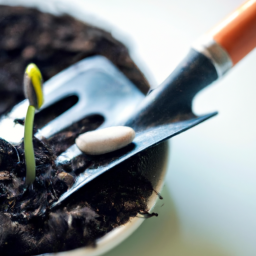
Unlocking the Potential: Maximizing Plant Growth from Seed
Introduction
Welcome to the world of growing plants from seed! It’s an exciting journey that allows you to witness the miracle of life firsthand. Whether you’re a seasoned gardener or a beginner, this guide will provide you with valuable insights on how to unlock the potential of your seeds and maximize plant growth. So, let’s dive in!
Choosing the Right Seeds
When it comes to growing plants from seed, selecting the right seeds is crucial. Consider the climate, soil conditions, and available space in your garden. Different plants have different requirements, so choose seeds that are suitable for your specific environment. Additionally, opt for high-quality seeds from reputable suppliers to ensure better germination rates and healthier plants.
Before sowing, it’s essential to understand the germination requirements of the seeds you’ve chosen. Some seeds require light to germinate, while others need darkness. Some may require scarification or stratification to break dormancy. Research the specific needs of your chosen seeds and provide the appropriate conditions to maximize germination success.
Furthermore, consider the time it takes for seeds to germinate and mature into healthy plants. Some plants, like tomatoes, require a longer growing season, while others, like lettuce, have a shorter time frame. Plan your planting schedule accordingly to give your plants ample time to grow and thrive.
Preparing the Soil
The quality of your soil plays a significant role in the growth of your plants. Start by preparing the soil before sowing your seeds. Remove any weeds, rocks, or debris that may hinder seed germination and plant growth. Loosen the soil to improve aeration and drainage, ensuring that the roots can penetrate easily.
Adding organic matter, such as compost or well-rotted manure, can greatly enhance soil fertility. Organic matter provides essential nutrients, improves soil structure, and promotes beneficial microbial activity. Work the organic matter into the top few inches of soil to create a nutrient-rich environment for your seeds to thrive.
It’s also important to test the pH level of your soil. Most plants prefer slightly acidic to neutral soil, with a pH range of 6 to 7. If your soil is too acidic or alkaline, adjust it accordingly by adding lime or sulfur. Maintaining the right pH level will optimize nutrient availability for your plants.
Sowing the Seeds
Now that you have selected your seeds and prepared the soil, it’s time to sow them. Follow these steps to ensure successful seed sowing:
Step 1: Prepare the Seedbed
Rake the soil to create a smooth and level seedbed. This will provide an even surface for sowing and allow for uniform water distribution.
Step 2: Sow the Seeds
Refer to the seed packet for specific instructions on seed spacing and depth. Make furrows or small holes in the soil using a finger, pencil, or a seed dibber. Place the seeds in the furrows or holes and cover them gently with soil. Pat the soil lightly to ensure good seed-to-soil contact.
Step 3: Water the Seeds
After sowing, water the seeds gently but thoroughly. Use a fine mist or a watering can with a rose attachment to avoid displacing the seeds. Keep the soil consistently moist but not waterlogged throughout the germination period.
Nurturing Seedlings
Once your seeds have germinated and seedlings have emerged, it’s time to provide them with the care they need to grow into healthy plants.
Light is crucial for seedling development. Place them in a bright location, preferably near a south-facing window or under grow lights. Ensure they receive at least 12-16 hours of light daily. If using grow lights, adjust their height to maintain an optimal distance from the seedlings.
Water your seedlings regularly, keeping the soil evenly moist but not waterlogged. Overwatering can lead to root rot and other issues, so be mindful of the moisture levels. As the seedlings grow, you may need to transplant them into larger containers to provide more space for their roots to expand.
Feeding your seedlings with a balanced liquid fertilizer can promote healthy growth. Follow the instructions on the fertilizer packaging for the correct dilution and frequency of application. Gradually introduce fertilizer to avoid overfeeding, which can damage the delicate seedlings.
Transplanting and Hardening Off
As your seedlings mature and outgrow their containers, it’s time to transplant them into the garden. Choose a day when the weather is mild and overcast to minimize transplant shock.
Dig a hole in the garden bed that is slightly larger than the root ball of the seedling. Gently remove the seedling from its container, being careful not to damage the roots. Place the seedling in the hole, backfill with soil, and firm it gently around the base of the plant.
After transplanting, your seedlings will need some time to adjust to their new environment. Harden them off gradually by exposing them to outdoor conditions over a period of 7-10 days. Start with a few hours of outdoor exposure in a sheltered location and gradually increase the time and exposure to direct sunlight.
During the hardening-off period, protect your seedlings from strong winds, heavy rain, and extreme temperatures. Once they have acclimated, your plants will be ready to thrive in the garden.
Conclusion
Growing plants from seed is a rewarding experience that allows you to witness the entire life cycle of a plant. By choosing the right seeds, preparing the soil, sowing with care, and nurturing your seedlings, you can unlock the full potential of your plants. Remember to provide them with optimal growing conditions, including light, water, and nutrients. With patience and proper care, you’ll be rewarded with a bountiful garden filled with vibrant, healthy plants. Happy gardening!
Highlights of this article
Growing plants from seed is a rewarding and fulfilling experience that allows us to witness the miracle of life firsthand. It not only saves money but also gives us the opportunity to unlock the full potential of our gardens. Whether you’re a seasoned gardener or a beginner, growing from seed opens up a world of possibilities and allows you to have complete control over the entire process.
One of the main benefits of growing from seed is the vast variety of plants you can choose from. Unlike buying pre-grown plants from a nursery, starting from seed gives you access to a wide range of unique and rare plant varieties that may not be readily available elsewhere. Additionally, growing from seed allows you to experiment with different growing techniques and customize your garden to suit your preferences. From vibrant flowers to delicious vegetables, the possibilities are endless when you start from seed.
Not only is growing from seed an exciting and educational experience, but it also helps you develop patience and perseverance. It requires dedication and attention to detail, but the rewards are well worth the effort. By starting from scratch, you gain a deeper understanding of the plant’s life cycle and develop a stronger connection with nature. So, why not give it a try? Unlock the potential of your garden and embark on a journey of growth and discovery by starting from seed.
Here are this week’s Top Questions and Answers
Q1: What does “Growing from Seed: Unlocking the Potential” mean?
A1: “Growing from Seed: Unlocking the Potential” refers to the process of cultivating plants by starting from seeds rather than using pre-grown plants or cuttings. It emphasizes the potential for growth and development that lies within each seed, allowing gardeners to unlock the full potential of their plants.
Q2: Why should I choose to grow plants from seed?
A2: Growing plants from seed offers several advantages. Firstly, it provides a wider variety of plant options, as seeds come in countless varieties and species. Secondly, starting from seed allows you to have complete control over the growing conditions, ensuring optimal care from the very beginning. Additionally, it can be a more cost-effective approach compared to buying pre-grown plants.
Q3: How do I get started with growing plants from seed?
A3: To start growing plants from seed, you’ll need a few basic supplies. These include quality seeds, seed trays or pots, a suitable growing medium (such as potting soil), water, and adequate light. Begin by filling your trays or pots with the growing medium, planting the seeds according to the instructions provided. Water them gently and place them in a well-lit area, ensuring they receive the right amount of moisture and sunlight as they germinate and grow.
Q4: What are some common challenges when growing plants from seed?
A4: While growing plants from seed is a rewarding experience, it can come with its own set of challenges. Some common issues include poor germination rates, inadequate light or temperature conditions, overwatering or underwatering, and pest infestations. However, with proper research, attention to detail, and regular monitoring, these challenges can be overcome, leading to successful seedling growth.
Q5: How long does it take for seeds to grow into mature plants?
A5: The time it takes for seeds to grow into mature plants varies greatly depending on the plant species. Some fast-growing plants may reach maturity within a few weeks or months, while others may take several years. It’s important to research the specific plant you’re growing to determine its expected growth timeline. Patience and consistent care are key to nurturing seeds into thriving, mature plants.
Dr. Olivia Green is a botanist with over two decades of experience in indoor plant cultivation. She holds a Ph.D. in Plant Biology and has dedicated her career to researching plant behavior in controlled environments. Dr. Green is passionate about helping plant enthusiasts master the art of indoor gardening through her extensive knowledge and practical insights.

